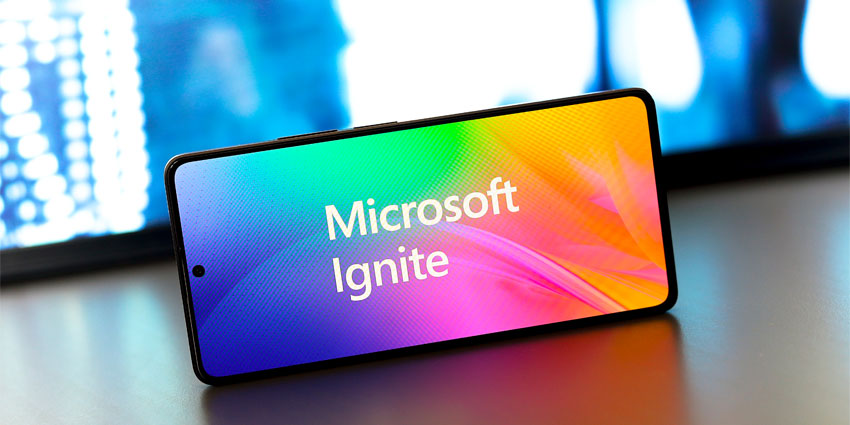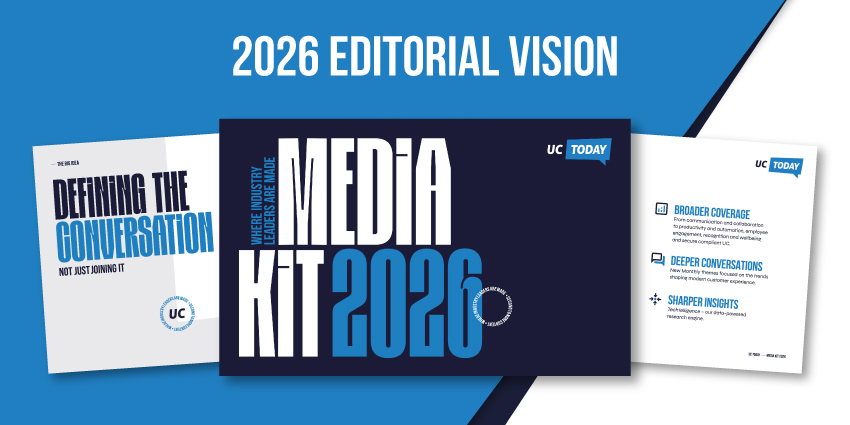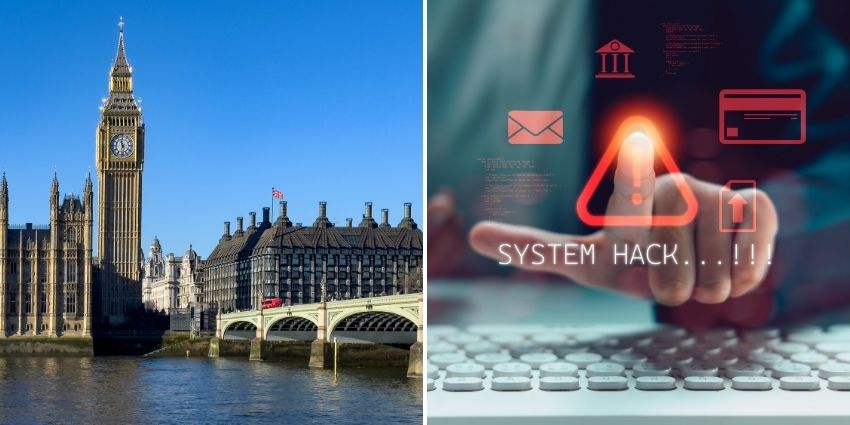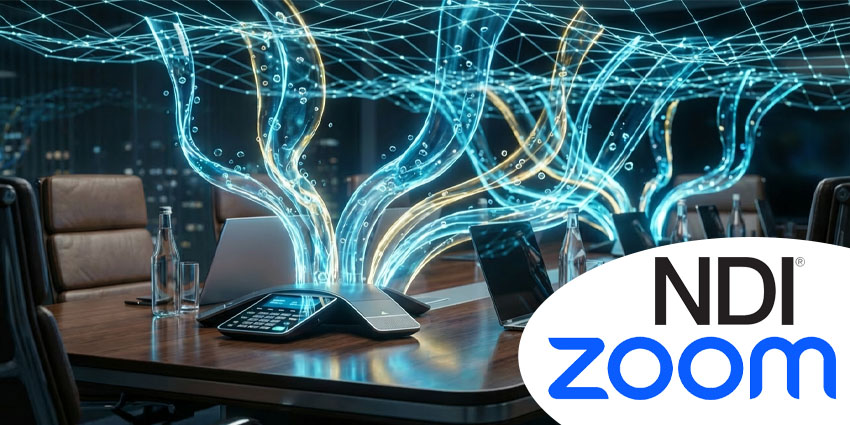It’s not quite the denouement of events season, which rolls on for a handful of weeks more, but Microsoft Ignite regularly feels like its climax—the heavyweight champion of UC and collaboration delivering one of the industry’s most eye-catching bouts of the year.
In 2023, Ignite was all about Copilot, Copilot, and Copilot, effectively capping off a year in which AI rapidly solidified its dominant role in our space and in the public consciousness at large. This year, Copilot and AI will likely take centre stage again, with plenty to reflect on in the year since Copilot’s rebranding and soft launch. But there will also be plenty of other exciting announcements and updates to dive into.
During UC Today‘s recent Big Teams News Show, Rob Scott canvassed our panel of Microsoft and Teams analysts and experts about the latest news across Microsoft’s UC and collaboration ecosystem, asking them to sift through the tea leaves of everything Microsoft has revealed recently for ideas on what Ignite might have in store for us this year.
“In our conversations with guests on the Microsoft Teams show on UC Today, it’s clear that artificial intelligence will be a headline focus at this year’s Microsoft Ignite,” Scott said. “However, it’s not without hurdles. Microsoft’s Copilot has sparked confusion, and adoption remains a significant challenge for both the company and its partner ecosystem. Still, we’re eager to see the innovations and announcements Ignite will bring this year.”
Can Microsoft Build From A Position Of Strength With Copilot And Its AI Investments—And Address The Adoption Challenges Some Organisations Are Facing?
“Microsoft disclosed a $13 billion total investment in OpenAI. While we’re still in early experimental days, they’re strategically positioned, leveraging AI in first-party products and Azure’s AI platform.” Kevin Kieller, Co-Founder of enableUC
“AI performance is doubling every six months, and Microsoft is committing to reinventing itself in this AI age. We’re on the edge of groundbreaking model changes.” Tom Arbuthnot, Cofounder at Empowering.Cloud
The AI race is well and truly off and running, with every participant increasingly competing at every level. Microsoft Copilot and Google Bard are being enhanced and updated at every opportunity to compete with OpenAI’s ChatGPT productivity assistant, while ChatGPT recently launched its Search search engine solution to compete with Google and Microsoft Bing. It’s an AI conflict on every software (and most hardware) front.
As Kevin Kieller and Tom Arbuthnot allude to, could Microsoft’s colossal investments in both OpenAI and its own models foreshadow news of a major leap in AI capabilities at this year’s Ignite?
“There’s still an uphill battle. Many users are confused about which Copilot they’re using, reflecting a broader need for clarity in Microsoft’s ecosystem.” Josh Blalock, Chief Video Evangelist at Jabra
“Salesforce’s aggressive push for agent-based scenarios has sparked Microsoft to emphasise agent-driven AI use cases alongside their people-first story.” Tom Arbuthnot
While Microsoft has the infrastructure for taking the next step in advanced LLMs, Josh Blalock pointed out issues with Copilot in its current form that have impeded adoption. Could new features around Copilot education and intuitiveness be unveiled at Ignite?
Meanwhile, as Tom Arbuthnot said, Microsoft has recently stressed AI agent scenarios to compete with competitor AI-powered solutions on the market. As well as signalling that Microsoft is still honing what exactly its AI and Copilot strategy is, is it possible that further AI agent use cases will be announced at this year’s show?
Could The Recent Teams Layout Change Signal More User Interface/Experience Updates To The Teams Platform?
“Arguably the biggest change ever to Teams… Microsoft is collapsing the hierarchy visually so that both chats and channels will live under a single chat icon. This is huge because it fundamentally changes how people think about chat versus channels.” Tom Arbuthnot
Last week, Microsoft announced that it was updating Teams’ layout, consolidating chats, teams, and channels into one unified area under Chat. This integration intends to streamline Teams users’ digital workspace, making accessing, triaging, and organising conversations simpler.
As Tom Arbuthnot highlights, this is a seismic change, but could it signal further updates to the Teams user experience to complement the new Chat capability?
“It may very well be successful, but in the interim, there could be confusion, especially for organisations that have heavily invested in their adoption strategies. It’s an uphill battle with any major platform change.” Josh Blalock
“When you’re into the hundreds of millions of users, anything you change creates a reaction. This is a big change, but necessary to drive the product forward.” Kevin Kieller
Additionally, as Josh Blalock and Kevin Kieller allude to, will Microsoft unveil some provision for supporting organisations and the 400 million Teams users in adapting to the significant change?
What Enhancements Will We See Around Microsoft Teams Phone and Teams Rooms?
“Microsoft has significantly improved Teams Phone survivability, allowing telephony to continue for up to seven days without internet, a major enhancement for business continuity.” Tom Arbuthnot
Aside from the Teams platform experience and Copilot’s future, other areas within the Teams ecosystem could receive intriguing updates at Ignite this year.
As Tom Arbuthnot highlights, Teams Phone’s reliability has received significant improvements recently and continues to go from strength to strength. Copilot might take most of the mainstream attention, but major Teams Phone upgrades could potentially be a significant Ignite aspect behind Ignite.
“Microsoft has gone GA with AppSpace and Zogo for digital signage in Teams Rooms, a feature driven by customer demand. Now, while systems are idle, organizations can showcase company content without losing meeting information visibility.” Graham Walsh, Director, Global Technical Sales, Alliances at Neat
Meanwhile, as Graham Walsh mentions, Microsoft recently made moves in the digital signage space by introducing digital signage functionality for Teams Rooms on Windows. This creates opportunities for organisations to use their Teams Rooms hardware for signage in addition to meetings and presentations, enabling them to communicate to teams, showcase company news and upcoming events, and reinforce brand messaging.
Could this recent news telegraph further Microsoft moves into the digital signage for collaboration display space?
Could We See More Features Around Microsoft Places And Hybrid Work Tools?
“Microsoft Places is packed with features like intelligent desk booking and presence detection, but success will depend on seamless integration without overwhelming users.” Ryan Herbst, Vice President & Chief Device Strategist at UnifiedCommunications.com
Complementing the potential updates for Microsoft’s solutions around digital signage for Teams Rooms, hybrid work tools is another market that Microsoft looks primed to explore with Places, its flagship solution in the space. As Ryan Herbst outlines, Places already offers a sophisticated and varied feature set for organisations looking to streamline their hybrid setups. However, Ignite could contain announcements that reaffirm Microsoft’s expansion into hybrid work tools more broadly.
The full video for the November Big Teams News Show will be published soon.









